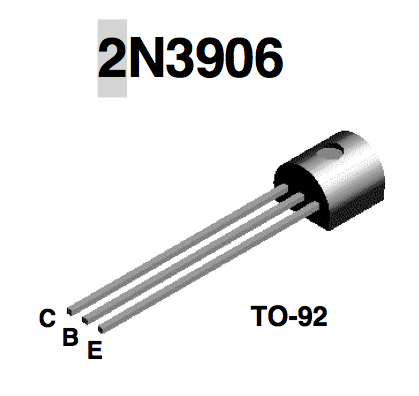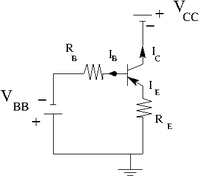TF EIMLab13 Writeup
DC Bipolar Transistor Curves
Transistor circuit
1.) Identify the type (n-p-n or p-n-p) of transistor you are using and fill in the following specifications.
| Value | Description |
| Collector-Base breakdown voltage | |
| Emitter-Base Breakdown Voltage | |
| Maximum Collector Voltage | |
| Maximum Collector Current | |
| Transistor Power rating() | |
| DC current gain |
2.) Construct the circuit below according to the type of transistor you have.
Let R_E = 100 \Omega.
V_{CC} = variable power supply
V_{BE}= 5V.
3.) Measure the emitter current for several values of by changing such that the base current A is constant.
| V_{CC} | V_B | V_ E | I_B | I_E |
4.) Repeat the previous measurements for A. Remember to keep so the transistor doesn't burn out
5.) Graph -vs- for each value of and above. (40 pnts)
6.) Overlay points from the transistor's data sheet on the graph in part 5.).(10 pnts)
Questions
- Compare your measured value of or for the transistor to the spec sheet? (10 pnts)
- What is for the transistor?(10 pnts)
- The base must always be more _________(________) than the emitter for a npn (pnp)transistor to conduct I_C.(10 pnts)
- For a transistor to conduct I_C the base-emitter junction must be ___________ biased.(10 pnts)
- For a transistor to conduct I_C the collector-base junction must be ___________ biased.(10 pnts)

